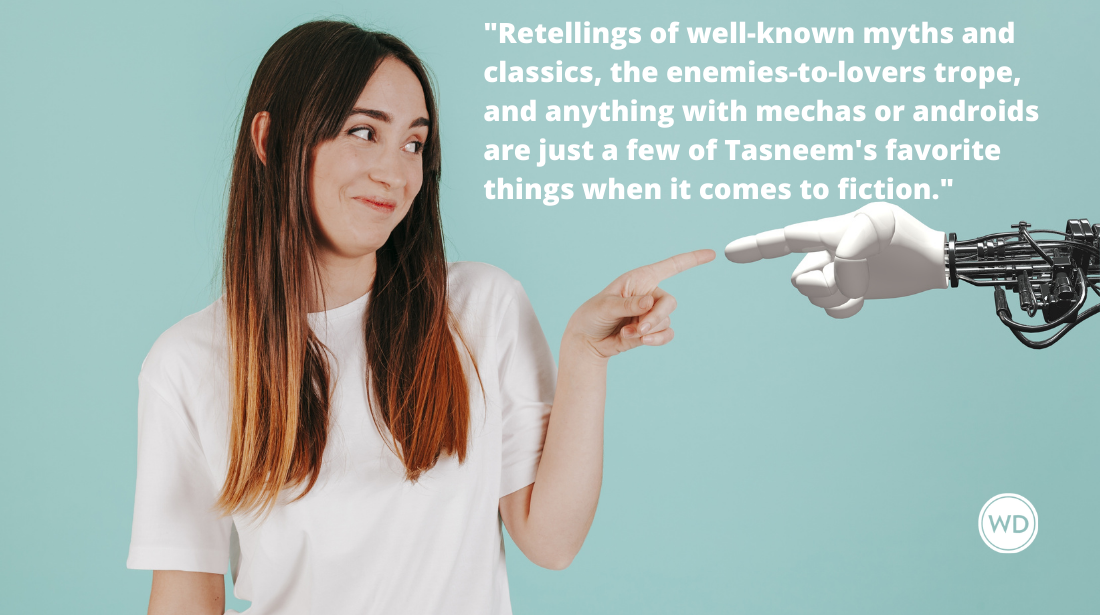“No, Thank You” — On Rejection & Writing
The most commonly acknowledged form of rejection for a writer is the rejection of one’s work by a publishing house. After spending months, if not years, shaping a story, you submit it hoping for acceptance and publication. Sadly, this is the exception, not the rule. The average writer is more likely to have a story rejected—often multiple times—rather than published immediately. It’s important to note that this does not immediately translate to fault on the writer’s part.
“Absorb what is useful, discard what is useless, and add what is specifically your own.” – Bruce Lee
Think of rejection and writing and you likely think of publishing. An author submits their work and receives a resounding no thanks. This, however, is only one form of rejection that writers face during their career. Bad reviews and paltry sales are also forms of rejection. Authors must also prepare themselves for these hits to their ego.
Check out Elene Sallenger's Unsettled today.
Amazon
[WD uses affiliate links.]
Will You Publish Me?
The most commonly acknowledged form of rejection for a writer is the rejection of one’s work by a publishing house. After spending months, if not years, shaping a story, you submit it hoping for acceptance and publication. Sadly, this is the exception, not the rule. The average writer is more likely to have a story rejected—often multiple times—rather than published immediately.
It’s important to note that this does not immediately translate to fault on the writer’s part. The acquisition process is subjective. A writer is at the mercy of the preferences of the editor and the publisher’s existing catalog. In other words, it may be that the story isn’t right for that publisher, not that the story isn’t worthy of publication. Hand-in-hand with this is the preference of the acquiring editor. As much as we all want to believe we are 100 percent objective, this isn’t so. Bias always exists and your story may not resonate with the editor leading them to reject it.
Many international bestsellers were rejected multiple times before finding the nirvana of fit and preference that launched their success. Twilight was rejected fourteen times. Harry Potter and the Sorcerer’s Stone was rejected twelve times before the insistence of the CEO’s eight-year-old daughter convinced him to take a minimal risk on the book. The list goes on. Finding a publisher is like finding your mate, the first person you date is rarely the one you marry.
They Don’t Like Me, They Really Don’t Like Me
Here is a basic fact: You can’t please everyone, and the moment you try, you cease to write anything interesting. When asked why they write, most writers will say it’s because they have stories to tell; they can do nothing else. However, this fails to answer why a writer shares their work. One can write indefinitely without ever sharing a single word. I believe that writers share their work, because at our deepest psychological level, we seek to move people emotionally.
Like with publishing, most of us fantasize about this in a positive way. In our minds, our work resonates with readers leading to public acclaim and praise of our story. In truth, no book goes without negative reviews. Even the classics had their detractors. Publishers Weeklyran a hilarious article about famous authors trashing books now considered classics. Reading it certainly puts bad reviews in perspective.
You got a bad review, so what! The very fact that a person was moved enough to write that review means you did your job, you sparked an emotional reaction. Shake the negativity off. Unless they are pointing out functional errors like poor proofing or continuity errors ignore them. They represent one person’s individual opinion. Don’t make mountains out of molehills, and, above all else, don’t reply!
They’re Not Buying It
When a book doesn’t sell, or fails to sell in quantity, the immediate conclusion tends to be that the problem lies in the story. However, there is a fundamental difference between writing a book and selling a book. Clearly, writing a book is a function of plot, character development, etc. However, selling a book is a function of packaging and promotion with emphasis on the former. All the promotion in the world won’t help a poorly packaged book.
If you’ve released a book and it’s just sitting there rotting, before scrapping the book consider your promotion efforts. Are you getting the word out effectively? If you can comfortably answer yes, or you make changes with no effect, you need to reevaluate how the book is packaged. By this, I mean the cover and the blurb. Test your blurb with friends and colleagues. Would they read that story? Once you’re satisfied with your blurb, consider changing the cover.
Book cover design is an art that is rooted in psychology. Typeface, color choice, and imagery all spark autonomic emotional reactions. A bad cover on a good book can impact sales dramatically. Always consider changing a book’s packaging before turning to the story itself.
In the end, the thing to remember is that rejection, in any form, is subjective. Once you eliminate the functional, or the technical from the publishing process, what you’re left with is strictly subjective opinion. What you do with that is up to you.
Hailing from Washington, DC, Elene Sallinger first caught the writing bug in 2004 after writing and illustrating several stories for her then four-year-old daughter. Her writing career has encompassed two award-winning children's stories, a stint as a consumer-education advocate, as well as several novels for Xcite Books, Sourcebooks, and UStar Novels. Her debut novel, AWAKENING (Chrysalis, Book 1), a work of erotic fiction, won the New Writing Competition at the Festival of Romance 2011. Find her on Twitter.






